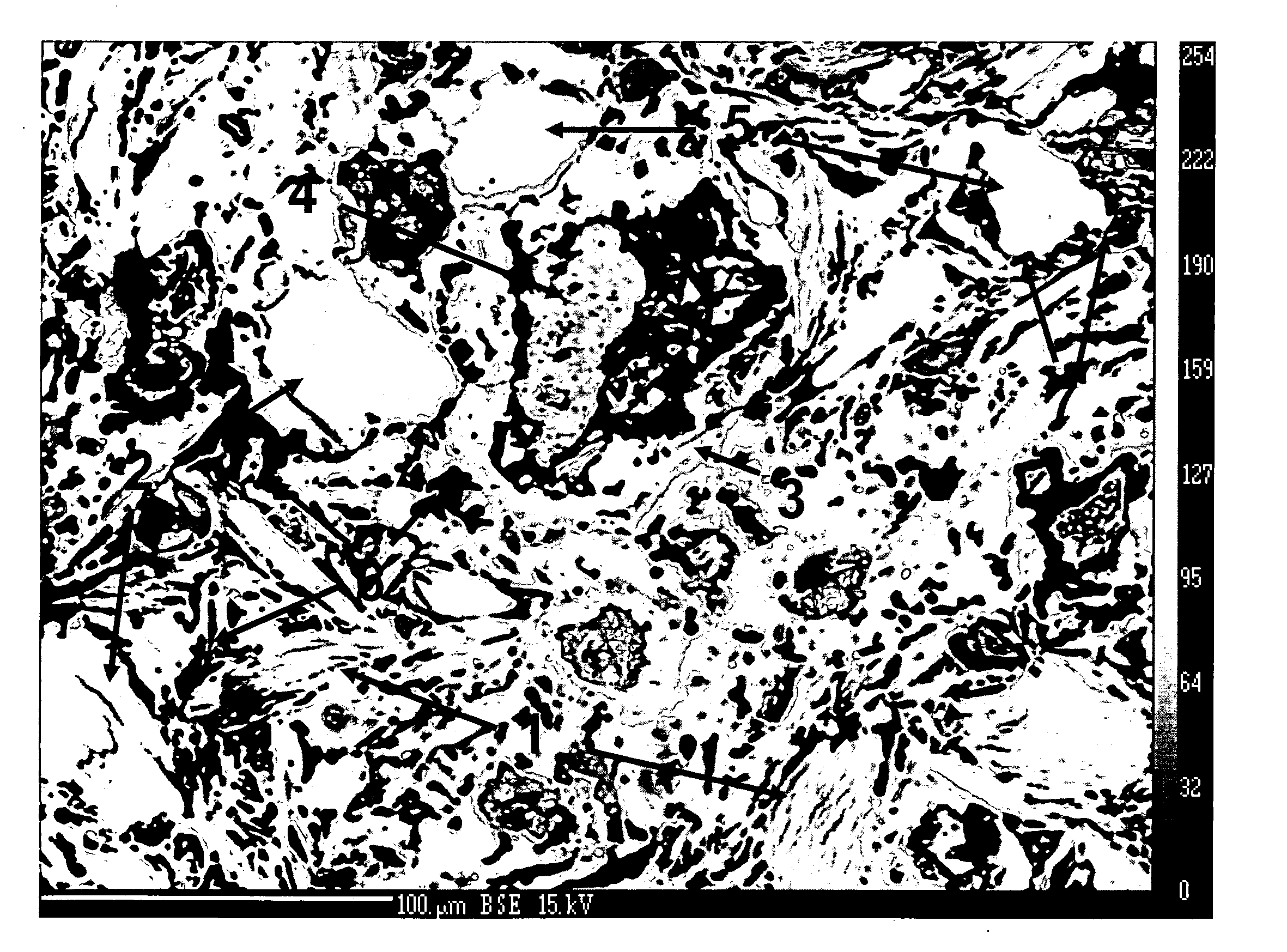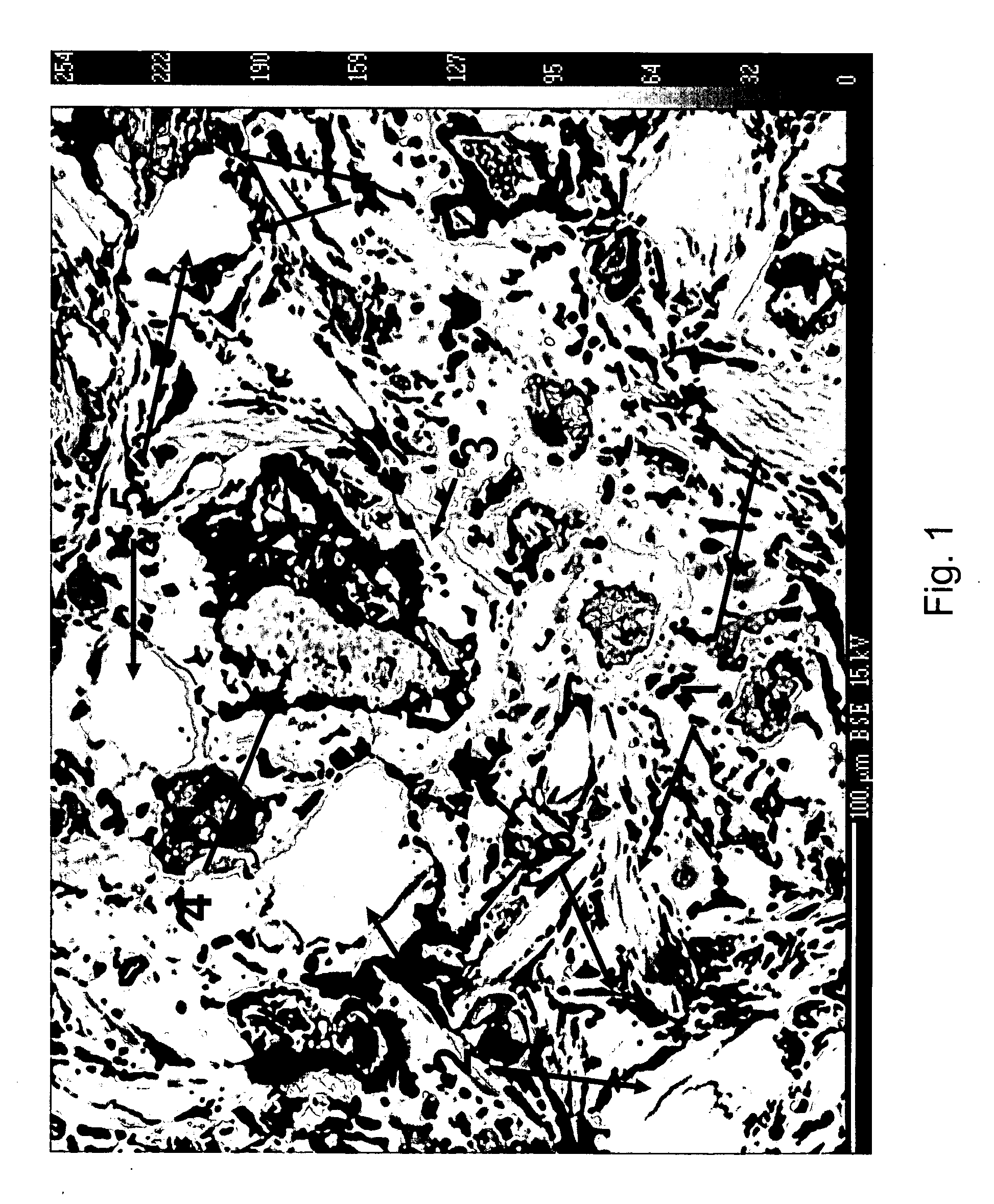Synthesized hybrid rock composition, method, and article formed by the method
- Summary
- Abstract
- Description
- Claims
- Application Information
AI Technical Summary
Benefits of technology
Problems solved by technology
Method used
Image
Examples
first embodiment
The First Embodiment
[0063] This embodiment is an apparatus and process for processing mine tailings employing a slow cooling schedule, which results in Applicant's composition and corresponding articles of manufacture.
TABLE 1Composition of some feed materialsIdaho-MarylandIdaho-Marylandmine tailingsdevelopment rockcoal fly ashmass %mass %mass %loss on ignition11.294.1919.1SiO255.648.739.84Al2O39.8914.813.23Na2O1.993.401.77MgO5.018.171.66K2O1.520.330.67CaO7.039.2319.52Fe2O35.129.722.62MnO0.110.150.02P2O50.180.120.42TiO20.670.930.62C (inorganic)0.230.555.16C (organic)2.330.021.65C (total)2.560.576.81S0.410.163.86
example 1
[0064] A sample of tailings from the Idaho-Maryland gold mine, having the general composition shown in Table 1, was air-dried to less than 3% moisture and screened to remove material larger than 516 microns (30 mesh). The raw tailings material was calcined in air at 900 degrees C. Following calcining, the material, without additives, was mechanically compacted using a ram at a pressure of approximately 350 psi within a nitride-bonded-silicon-carbide process tube at a temperature of 1130 degrees C. for an extended period of time, approximately 60 hours at temperature. The material was then slowly cooled, at a rate of 1 to 3 degrees C. per minute, forming a synthetic rock hybrid material, which was then removed from the process tube. Test specimens of the resulting synthetic rock hybrid material had an average modulus of rupture of about 85 MPa (12320 psi), and an average water absorption of about 0.3% as determined by method ASTM C373. Other resulting data are shown in Table 2.
TABL...
second embodiment
The Second Embodiment
[0070] This embodiment is a method of processing mine tailings employing a fast cooling schedule, which results in Applicant's composition and corresponding articles of manufacture.
PUM
| Property | Measurement | Unit |
|---|---|---|
| Time | aaaaa | aaaaa |
| Time | aaaaa | aaaaa |
| Time | aaaaa | aaaaa |
Abstract
Description
Claims
Application Information
 Login to View More
Login to View More - R&D
- Intellectual Property
- Life Sciences
- Materials
- Tech Scout
- Unparalleled Data Quality
- Higher Quality Content
- 60% Fewer Hallucinations
Browse by: Latest US Patents, China's latest patents, Technical Efficacy Thesaurus, Application Domain, Technology Topic, Popular Technical Reports.
© 2025 PatSnap. All rights reserved.Legal|Privacy policy|Modern Slavery Act Transparency Statement|Sitemap|About US| Contact US: help@patsnap.com



